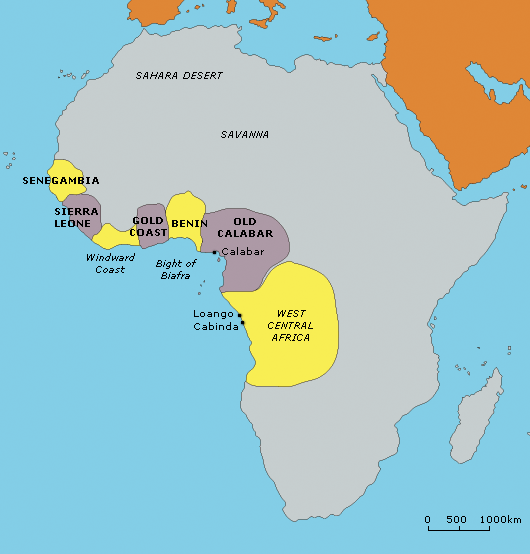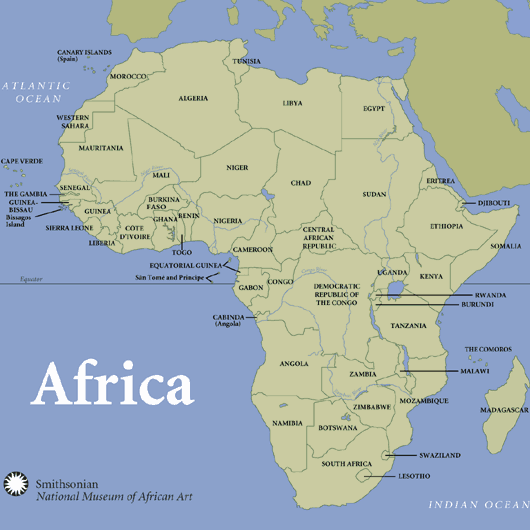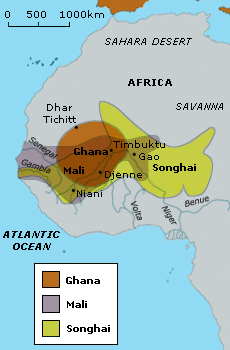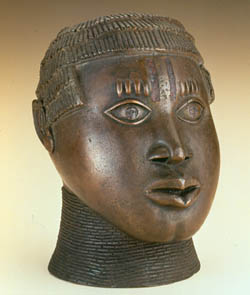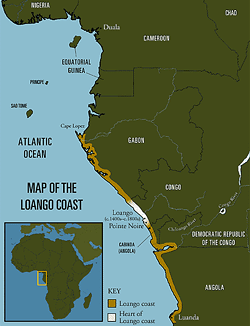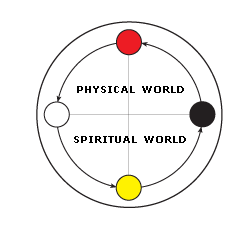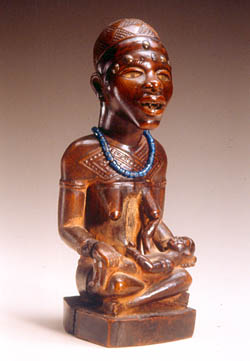Historic Contexts
REFUTING the “Myths of the Negro Past”
- Negroes are naturally of a childlike character and adjust easily to the most unsatisfactory social situations, which they readily accept and even happily, in contrast to American Indians, who preferred extinction to slavery.
- Only the poorer stock of Africa was enslaved, the more intelligent members of African communities raided having been clever enough to elude the slaver’s net.
- Since Negroes were brought from all parts of the African continent, spoke diverse languages, represented differing bodies of custom, and as a matter of policy, were distributed in the New World so as to lose tribal identity, no least common denominator of understanding and behavior could possibly have been worked out by them.
- Even granting that enough Negroes of a given tribe had the opportunity to live together, and that they had the will and ability to continue their customary modes of behavior, the cultures of Africa were so savage and relatively low on the scale of human civilization that the apparent superiority of European customs, as observed in the behaviors of their masters, would have caused and actually did cause them to give up such aboriginal tradition as they may otherwise have desired to preserve.
- The Negro is thus a man without a past.
(Long 1975:56)
Knowledge of one’s own cultural heritage and that of other peoples’ cultural heritage is one of the keys to understanding ourselves and others (UNESCO 2002). This section provides an overview of the geographical origins, history and selected cultural features of the Africans who were enslaved, free persons or indentured servants in the American colonies. These Africans helped to develop, defend, and establish our nation and are the ancestors of the majority of present day African Americans.
Understanding the life and culture of colonial Africans can be helpful to Park Service personnel for understanding why certain places, landscapes, objects, sites and structures have ethnographic significance for many contemporary African Americans.
Finally, it is important to learn about the history and heritage of African Americans that extends back into antiquity because throughout slavery and afterwards, people of European descent, particularly those in the United States, advanced what Herskovits called the “Myths of the Negro Past. (Drake 1990:1–14).” These myths were advanced particularly and primarily about African Americans as rationales to justify slavery, and later discrimination and segregation. Historic Contexts provides background knowledge to refute any persisting erroneous views that African people arrived in the New World without a past, as “culturally naked”—views that reflects ignorance of African cultural diversity, the process of enslavement and the dynamics of cultural change in the New World (Herskovits 1941).
Africans Before Captivity
Most Africans who came to North America were from West Africa and West Central
Africa.
Western Africa begins where the Sahara desert ends. A short erratic, rainy season
supports the sparse cover of vegetation that defines the steppe like Sahel.
The Sahel serves as a transition to the Sudan and classic savanna where a longer
rainy season supports baobab and acacia trees sprinkled across an open vegetative
landscape dominated by bushes, grasses and other herbaceous growth. Next comes
another narrow transitional zone, where the savanna and forest intermingle,
before the rain forest is reached. Finally, there is the coast, fringed with
mangrove swamps and pounded by heavy surf (Newman 1995:104). The Sahara is likened
to a sea lying north of West Africa and the Sahel to its shore. The desert and
the Sahel form geographical barriers to sub-Saharan West Africa that, like of
the Atlantic Ocean, contributed to the comparative isolation of the region from
early Mid-east and European civilization until the 15th century.
Knowledge of sub-Saharan West Africa is weak for the period before 800 A.D., after which the rise of Islam made Arabic records available, according to Phillip Curtin (1990:32). Evidence from Dar-Tchitt, an archeological site in the area of Ancient Ghana, suggests agricultural expansion and intensification gave rise to walled villages of 500–1000 inhabitants as early as 900–800 B.C. By 700 B.C. the settlement patterns changed to smaller, somewhat more numerous and unwalled villages.
Jenne-Jeno, a second archeological site, was first settled around 250 B.C. Located around the inland delta of the Niger river, Jenne-Jeno probably started out as a place where local farmers, herders, and fisher folk brought produce to exchange with one another. Over time the location became an interregional trade center. It might have been the first one in the region, according to Newman, but if so others soon followed and several of these became the foci for a series of kingdoms and empires in the Sahel and Sudan. Eventually the region was densely populated by people who had a social organization based on kinship ties and political forms that are properly called states, and cities based on Saharan trade, at least as far south as modern day Djenne. What we know about these states and cities comes mostly from oral traditions and literate Muslim Arab and Berber travelers, who made their first visits to the region in the 8th century (Curtin 1990:45; Newman 1995:109–110). Oral sources included African poems, praise songs, and accounts of past events usually passed on through official oral historians such as Griots, who recite the histories from Ancient Mali and Songhai.
Medieval West Africa
When the Portuguese first explored the West African coastline, the cultures of African societies were highly evolved and had been so for centuries. In the millennium preceding Portuguese exploration, three large centers of medieval African civilization developed sequentially along the west coast of sub-Saharan Africa.
The first polity that is known to have gained prominence was Ancient Ghana. Between 500 AD–1250 AD, Ancient Ghana flourished in the southern Sahel north of the middle Niger and middle Senegal Rivers. Boahen, bases his account of Ancient Ghana on Al-Bakri and Al-Idrisi, two Arabic scholars writing their descriptions in 1067 and in 1154 respectively, when Ghana was at the height of its power. He tells us that Ancient Ghana had a civil service, strong monarchy based on a matrilineal system of inheritance, a cabinet, an army, an effective justice system and a regular source of income from trade as well as tribute from vassal kings (Boahen 1966:4–9).
As Ghana declined over the next 200 years, the ancient Mali Empire arose in the same area but descended territorially further along the Niger River. Mali encompassed a huge area stretching from the Lower Senegal and Upper Niger rivers eastward to the Niger bend and northward to the Sahel.
Its great size made Mali an even more diverse state than Ghana. The majority of the people lived in small villages and cultivated rice or sorghums and millets, while some communities specialized in herding and fishing. Trade flourished in the towns, which housed a wide array of craftspeople, along with a growing number of Islamic teachers and holy men. The main commercial centers were its capitals Niani, Timbuktu, and Gao.
Mansa Musa is the most remembered of the kings of Mali. During Musa’s reign 1307–1337, Mali’s boundaries were extended to their farthest limits. There were fourteen provinces ruled by governors or emirs who were usually famous generals. Berber provinces were governed by their own sheiks. They all paid tribute to Musa in gold, horses and clothes. Musa instituted national honors for his provincial administrators to encourage devoted service. He ruled impartially with a great sense of justice. To help in this work he had judges, scribes and civil servants. Musa established diplomatic relationships with other African states, especially Morocco, with whom he exchanged ambassadors.
Mansa Musa is probably best known as the ruler who firmly established the Islamic religion in Mali along with peace, order, trade and commerce. Mansa Musa started the practice of sending students to Morocco for studies and he laid the foundation for what later became the city of Timbuktu, the commercial and educational center of the western Sudan (Boahen 1966:17–22).
Present day Mande people trace their ancestry back to the great 13th century. Learn more about what archeology has uncovered in Jeno-Jenne about the past of the Mande people, Africans who helped settle America during the 17th and 18th centuries (Hall 1992:45).
Around 1375, Gao, a small tributary state of Mali, broke away under the leadership of Sunni Ali and thus began the rise of the Songhai Empire. Over the next 28 years, Sunni Ali converted the small kingdom of Gao into the huge empire of Songhai. Songhai encompassed the geographic area of ancient Ghana and Mali combined and extended into the region of the Hausa states of ancient and contemporary northwest Nigeria.
Mandinka, Wolof, Bamana, (also called Bambara) peoples, and others lived in the western reaches of the Songhai in the Senegambia area. Hausa and Fulani people lived in the region that is now northwest Nigeria. All of these cultures still exist.
Islamic scholars and African oral traditions document that all of these states had centralized governments, long distance trade routes, and educational systems. Between the 13th and 17th centuries Mande and Mande-related warriors established the dominance of Mande culture in the Senegambia geographical region. Throughout the West African savanna where people migrated in advance of the Mande warriors, people spoke mutually intelligible Mandekan languages, and had a strong oral history tradition. In the 18th century people of the Mande culture were highly represented among those enslaved in the French Louisiana colony in North America (Hall 1992).
By the time, Portugal and Spain embarked on exploration and conquest of the Western Hemisphere, Mohammed Askia I ruled over Songhai. Askia completed Mansa Musa’s project to create a great center of learning, culminating with the establishment of the Sankore University in Timbuktu. Sankore teachers and students were from all over sub-Saharan Africa and from the Arabic nations to the east. Leo Africanus, an eyewitness described Sankore University thus:
“[H]ere are great stores of doctors, judges, priests and other learned men that are bountifully maintained at the King’s (Muhammad Askia) costs and charges ([1600] 1896).”
Leo Africanus was born, El Hasan ben Muhammed el-Wazzan-ez-Zayyati in the city of Granada in 1485, but was expelled along with his parents and thousands of other Muslims by Ferdinand and Isabella in 1492. Settling in Morocco, he studied in Fez and as a teenager accompanied his uncle on diplomatic missions throughout North Africa. During these travels, he visited Timbuktu. As a young man he was captured by pirates and presented as an exceptionally learned slave to the great Renaissance pope, Leo X. Leo who freed him, baptized him under the name “Johannis Leo de Medici,” and commissioned him to write in Italian a detailed survey of Africa. His accounts provided most of what Europeans knew about the continent for the next several centuries.
Leo Africanus also described Timbuktu as:
“[A] town full of exceedingly rich merchants and hither continually resort a great store of Negroes which buy cloth brought out of Barbary and Europe. It is a wonder to see what plenty merchandise is daily brought thither, and how costly and sumptuous things be([1600] 1896).”
The clothes that Africanus describes were European textiles traded for the Songhai exports of gold, ivory, and slaves. Read the full description of Timbuktu written by Leo Africanus.
West Africa 1300–1800 A.D.
From the 14th through the 18th century, three smaller political states emerged in the forests along the coast of Africa below the Songhai Empire. The uppermost groups of states were the Gonja or Volta Kingdoms, located around the Volta River and the confluence of the Niger, on what was called the Windward Coast, now Sierra Leone and Liberia. Most of the people in the upper region of the Windward Coast belonged to a common language group, called Gur by linguists. They also held common religious beliefs and a common system of land ownership. They lived in decentralized societies where political power resided in associations of men and women.
Below the Volta lay the Asante Empire in the southeastern geographical area of the contemporary nations of Cote d’Ivoire, Togo and modern Ghana. By the 15th century the Akan peoples, who included the Baule, and Twi-speaking Asante, reached dominance in the central region. Akan culture had a highly evolved political system. One hundred years or more before the rise of democracy in North America, the Asante governed themselves through a constitution and assembly. Commercially the Asante-dominated region straddled the African trade routes that carried ivory, gold and grain. As a result, Europeans called various parts of the region the Ivory Coast, Grain Coast and Gold Coast. Learn more about the early history of African civilizations that were the origins of enslaved African peoples who helped explore and settle the New World. The transatlantic slave trade was fed by the emergence of these Volta Kingdoms and the Asante Empire. During the 17th and early 18th centuries African people called from these regions were predominately among those enslaved in the British North American mainland colonies (Boahen 1966).
Just below the Gold Coast lay the Bights of Benin and Biafra. Oral history and findings in archeological excavation attest that Yoruba people have been the dominate group on the west bank of the Niger River as far as their historical memory extends and even further into the past. The twelfth century found the Yoruba people beginning to coalesce into a number of territorial city-states of which Ife, Oyo, and Benin dominated. Old loyalties to the clan or lineage were subordinated to allegiance to a king or oni. The Oni was chosen on a rotating basis by the clans. Below him, was an elected state hierarchy that depended on broad support from the community. The people were subsistence farmers, artisans, and long distance traders in cloth, kola nuts, palm oil, and copper. Trade and the acquisition of horses were factors in the emergence of Oyo as the dominant political power among the Yoruba states by late 14th and early 15th century (Boahen 1966).
Dahomey, or Benin, created by the Fon ruling dynasty, came to dominance in the 17th century and was a contemporary of the Asante Empire. As early as the 17th century the Oyo kingdom had an unwritten constitution with a system of political checks and balances. Dahomey, located in Southern Nigeria, east of Yorubaland and west of the Niger River also claimed to have obtained kingship from the Yoruba city of Ife. Oyo and Ife not only shared a common cultural history but also shared many other cultural characteristics, such as religious pantheons, patrilineal descent groups, urbanized settlement patterns, and a high level of artistic achievement by artisans, particularly in ivory, wood, brass and bronze sculpture.
Relatively few Yoruba and Fon people, the two principal ethnic groups in the Oyo kingdoms, were enslaved in North America. Most were carried to Santa Domingo (Haiti) and Brazil. During and after the Haitian Revolution, some of the Fon people who were enslaved in Haiti immigrated voluntarily or involuntarily to New Orleans (Hall 1992).
The Ibo people, the third principal group found around the Bight of Biafra in the southeastern part of the region, predominated among those enslaved in the Chesapeake region during the late 17th and early 18th century. Later in the 18th century Africans, whom the Europeans called the “Congos,” i.e. Kongos, and “Angolas,” predominated among those enslaved in Virginia and the Low Country plantations of colonial South Carolina (Curtin, 1969; Morgan 1998:63; Eltis et al 2002).
West Central Africa 14th–18th Centuries
In the century before Portuguese exploration of West Africa, the Kongo was another Kingdom that developed in West Central Africa. In the three hundred years from the date the kingdom was founded by Ne Lukeni Kia Nzinga until its destruction in 1665 by the Portuguese, Kongo was an organized stable, politically centralized society based upon a subsistence economy. The Kongo is significant in exploring the historic contexts of African American heritage because the majority of all Africans enslaved in the Southern English colonies were from West Central Africa (Curtin 1969; Eltis et al 2001).
The Bakongo (the Kongo people), today several million strong, live in modern Democratic Republic of the Congo, Congo-Brazzaville, neighboring Cabinda, and Angola. The present division of their territory into modern political entities masks the fact that the area was once united under the suzerainty of the ancient Kingdom of Kongo, one of the most important civilizations ever to emerge in Africa, according to Robert Ferris Thompson. The Kings of the Kongo ruled over an area stretching from the Kwilu-Nyari River, just north of the port of Loango, to the river Loje in northern Angola, and from the Atlantic to the inland valley of the Kwango. Thompson estimates the Kongo encompassed an area roughly equaling the miles between New York City and Richmond, Virginia, in terms of coastal distance and between Baltimore and Eire, Pennsylvania, in terms of inland breadth. Birmingham comments that by 1600, after a century of overseas contact with the Portuguese, the “complex Kongo kingdom…dominated a region more than half the size of England which stretched from the Atlantic to the Kwango (1981:29).”
The Bakongo shared a common culture with the people of eight adjoining regions, all of whom were either part of the Kongo Kingdom during the transatlantic slave trade, or were part of the kingdoms formed by peoples fleeing from the advancing armies of Kongo chiefdoms. In their records slave traders called the Bakongo, as well as the people from the adjoining regions, “Congos” and “Angolas” although they may have been Mbembe, Mbanda, Nsundi, Mpangu, Mbata, Mbamba or Loango.
Ki-Kongo-speaking groups inhabited the West Central African region then known as the Loango Coast. The term Loango coast describes a historically significant area of West Central Africa extending from Cape Lopez or Cape Catherine in Gabon to Luanda in Angola. Within this region, Loango has been the name of a kingdom, a province, and a port. Once linked to the powerful Kongo Kingdom, the Loango Kingdom was dominated by the Villi, a Kongo people who migrated to the coastal region during the 1300s. Loango became an independent state probably in the late 1300s or early 1400s. With two other Kongo-related kingdoms, Kakongo, and Ngoyo (present day Cabinda), it became one of the most important trading states north of the Congo River.
A common social structure was shared by people in the coastal kingdoms of Loango, Kakongo, Ngoyo, Vungu, and the Yombe chiefdoms; the Teke federation in the east and the Nsundi societies on either side of the Zaire River from the Matadi/Vungu area in the west to Mapumbu of Malebo pool in the east. The provincial regions, districts, and villages each had chiefs and a hierarchical system through which tribute flowed upward to the King of the Kongo and rewards flowed downward. Each regional clan or group had a profession or craft, such as weaving, basket making, potting, iron working, and so on. Tribute and trade consisted of natural resources, agricultural products, textiles, other material cultural artifacts and cowries shells (Vansima 1962; Birmingham, 1981:28–30; Bentley, 1970:75).
The “Kongos” and “Angolas” shared a “lingua franca” or trade language that allowed them to communicate. They also shared other cultural characteristics such as matrilineal social organization and a cosmology expressed in their religious beliefs and practices.
Woman-and-child figures are visual metaphors for both individual and societal fertility among Kongo Peoples and reflect their matrilineal social organization, that is, tracing their kinship through their mother’s side of the family.
Cosmology is a body of collective representations of the world as a whole, ordered in space and time, and a human’s place in it.
Fu-Kiau, the renowned Kongo scholar, was the first writer to make Kongo cosmology explicit (Fu-Kiau 1969). According to Fu Kiau Bunseki,:
“The Kongo cosmogram is the foundation of Kongo society. The circle made by the sun's movement is the first geometric picture given to human beings. We move the same way the sun moves: we wake up, are active, die, then come back. The horizon line is the kalunga line between the physical and spiritual world. It literally means ‘the line of God.’ When you have a circle of the Kongo cosmogram, the center is seen as the eternal flame. It is a way to come closer to the core of the community. If someone is suffering, they say ‘you are outside the circle, be closer to the fire.’ To stand on the cosmogram is to tie a social knot, bringing people together. Dikenga is from the verb kenga, which means ‘to take care, to protect,’ but also the flame or fire from inside the circle, to build and give life” (Fu-Kiau 2001).
Matrilineal social organization and certain cosmological beliefs expressed in religious ceremonies and funerary practices continue to be evident in the culture of rural South Carolina and Florida African Americans who are descendants of enslaved Africans (Brown 1987, 1988, 1989, 1994, 2000, 2001; Thompson 1984; Thompson and Cornet 1981).
European slave trade led to internal wars, enslavement of multitudes, introduction of major political upheavals, migrations, and power shifts from greater to lesser-centralized authority of Kongo and other African societies. Most notably the slave trade destroyed old lineages and kinship ties upon which the basis of social order and organization was maintained in African societies (MacGaffey 1986).
The history and culture of West Central African peoples is important to the understanding of African American people in the present because of their high representation among enslaved peoples. It has been estimated that 69% of all African people transported in the Transatlantic Slave Trade between 1517–1700 A.D. were from West Central Africa and, between 1701–1800, people from West Central Africa comprised about 38% of the all Africans brought to the West to be enslaved (Curtin 1969). In South Carolina, by 1730, the number of Africans or “salt-water negroes,” mostly from West Central Africa, and “native-born” African Americans, many descendant from West Central Africans, exceeded the white population.




